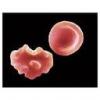Reputation Activity
-
 heathervaught got a reaction from Gnapplec in Reporting posts
heathervaught got a reaction from Gnapplec in Reporting posts
Hi all,
I admittedly have been absent from these forums for an extended period of time. It's good to see some familiar names on here! It's equally good to see some new names on here as well.
I was was just reading through a forum and saw some posts that involved name calling and general disrespectful behavior. While I appreciate a good debate and a witty discussion of relevant topics, I find neither of those actions as fueling intelligent conversation. I considered calling out this individual in the forum, but then discovered that there was a way to report the post to the administrator. If you also feel that these comments are detrimental to furthering productive discourse, I would encourage you to use the Report feature. We, as a community, do not need to tolerate such behavior.
-
 heathervaught got a reaction from Gnapplec in Bacterial Testing - Apheresis Platelets
heathervaught got a reaction from Gnapplec in Bacterial Testing - Apheresis Platelets
https://www.fda.gov/downloads/BiologicsBloodVaccines/GuidanceComplianceRegulatoryInformation/Guidances/Blood/UCM425952.pdf
This is in Draft status, but should be finalized this year. Once finalized, FDA will give 2 years for implementation. Transfusion services should not be mandated to make changes until some time in 2019 or later. There are some misstatements in some previous posts that should be clarified.
PAS apheresis platelets can be stored up to 5 days and must have a "safety measure" test within 24 hours of transfusion if transfused on Day 4 or 5. The use of platelet additive solution does not confer any protection against bacterial proliferation. Plasma-stored apheresis platelets can be stored up to 7 days and must have a "safety measure" test within 24 hours of transfusion if transfused on Day 4, 5, 6, or 7. Pathogen reduced apheresis platelets can be stored up to 5 days and can be transfused up until expiration without additional testing.
-
 heathervaught got a reaction from Hozman in Info on Blood irradiator
heathervaught got a reaction from Hozman in Info on Blood irradiator
UVblood: the irradiation devices that this conversation is focused on is not for pathogen reduction or sterilization. In this application, irradiation is used to damage the DNA of T-lymphocytes of donor origin so that they cannot replicate in the recipient and cause a sometimes fatal condition called Graft-versus-Host Disease.
-
 heathervaught got a reaction from GCH LAB RAT in Bacterial Testing - Apheresis Platelets
heathervaught got a reaction from GCH LAB RAT in Bacterial Testing - Apheresis Platelets
https://www.fda.gov/downloads/BiologicsBloodVaccines/GuidanceComplianceRegulatoryInformation/Guidances/Blood/UCM425952.pdf
This is in Draft status, but should be finalized this year. Once finalized, FDA will give 2 years for implementation. Transfusion services should not be mandated to make changes until some time in 2019 or later. There are some misstatements in some previous posts that should be clarified.
PAS apheresis platelets can be stored up to 5 days and must have a "safety measure" test within 24 hours of transfusion if transfused on Day 4 or 5. The use of platelet additive solution does not confer any protection against bacterial proliferation. Plasma-stored apheresis platelets can be stored up to 7 days and must have a "safety measure" test within 24 hours of transfusion if transfused on Day 4, 5, 6, or 7. Pathogen reduced apheresis platelets can be stored up to 5 days and can be transfused up until expiration without additional testing.
-
 heathervaught got a reaction from dragonlady97213 in Reconstituted Whole Blood
heathervaught got a reaction from dragonlady97213 in Reconstituted Whole Blood
Most of our reconstituted whole blood is made using washed RBCs (to remove the residual anti-A/anti-B/anti-A,B), which necessitates the 24 hour outdate.
-
 heathervaught got a reaction from BldBnker in Reconstituted Whole Blood
heathervaught got a reaction from BldBnker in Reconstituted Whole Blood
Most of our reconstituted whole blood is made using washed RBCs (to remove the residual anti-A/anti-B/anti-A,B), which necessitates the 24 hour outdate.
-
 heathervaught got a reaction from MaryPDX in 4 hours to transfuse
heathervaught got a reaction from MaryPDX in 4 hours to transfuse
We do 4 hours after it leaves the Blood Bank.
-
 heathervaught got a reaction from MaryPDX in Bacterial Testing - Apheresis Platelets
heathervaught got a reaction from MaryPDX in Bacterial Testing - Apheresis Platelets
https://www.fda.gov/downloads/BiologicsBloodVaccines/GuidanceComplianceRegulatoryInformation/Guidances/Blood/UCM425952.pdf
This is in Draft status, but should be finalized this year. Once finalized, FDA will give 2 years for implementation. Transfusion services should not be mandated to make changes until some time in 2019 or later. There are some misstatements in some previous posts that should be clarified.
PAS apheresis platelets can be stored up to 5 days and must have a "safety measure" test within 24 hours of transfusion if transfused on Day 4 or 5. The use of platelet additive solution does not confer any protection against bacterial proliferation. Plasma-stored apheresis platelets can be stored up to 7 days and must have a "safety measure" test within 24 hours of transfusion if transfused on Day 4, 5, 6, or 7. Pathogen reduced apheresis platelets can be stored up to 5 days and can be transfused up until expiration without additional testing.
-
 heathervaught got a reaction from MaryPDX in Reconstituted Whole Blood
heathervaught got a reaction from MaryPDX in Reconstituted Whole Blood
Most of our reconstituted whole blood is made using washed RBCs (to remove the residual anti-A/anti-B/anti-A,B), which necessitates the 24 hour outdate.
-
 heathervaught got a reaction from Cliff in 4 hours to transfuse
heathervaught got a reaction from Cliff in 4 hours to transfuse
We do 4 hours after it leaves the Blood Bank.
-
 heathervaught reacted to Malcolm Needs in Infusion filter set question
heathervaught reacted to Malcolm Needs in Infusion filter set question
Huh, I've heard that one before Heather!!!!!!!!
-
 heathervaught got a reaction from kate murphy in Bacterial Testing - Apheresis Platelets
heathervaught got a reaction from kate murphy in Bacterial Testing - Apheresis Platelets
https://www.fda.gov/downloads/BiologicsBloodVaccines/GuidanceComplianceRegulatoryInformation/Guidances/Blood/UCM425952.pdf
This is in Draft status, but should be finalized this year. Once finalized, FDA will give 2 years for implementation. Transfusion services should not be mandated to make changes until some time in 2019 or later. There are some misstatements in some previous posts that should be clarified.
PAS apheresis platelets can be stored up to 5 days and must have a "safety measure" test within 24 hours of transfusion if transfused on Day 4 or 5. The use of platelet additive solution does not confer any protection against bacterial proliferation. Plasma-stored apheresis platelets can be stored up to 7 days and must have a "safety measure" test within 24 hours of transfusion if transfused on Day 4, 5, 6, or 7. Pathogen reduced apheresis platelets can be stored up to 5 days and can be transfused up until expiration without additional testing.
-
 heathervaught got a reaction from AMcCord in Bacterial Testing - Apheresis Platelets
heathervaught got a reaction from AMcCord in Bacterial Testing - Apheresis Platelets
https://www.fda.gov/downloads/BiologicsBloodVaccines/GuidanceComplianceRegulatoryInformation/Guidances/Blood/UCM425952.pdf
This is in Draft status, but should be finalized this year. Once finalized, FDA will give 2 years for implementation. Transfusion services should not be mandated to make changes until some time in 2019 or later. There are some misstatements in some previous posts that should be clarified.
PAS apheresis platelets can be stored up to 5 days and must have a "safety measure" test within 24 hours of transfusion if transfused on Day 4 or 5. The use of platelet additive solution does not confer any protection against bacterial proliferation. Plasma-stored apheresis platelets can be stored up to 7 days and must have a "safety measure" test within 24 hours of transfusion if transfused on Day 4, 5, 6, or 7. Pathogen reduced apheresis platelets can be stored up to 5 days and can be transfused up until expiration without additional testing.
-
 heathervaught got a reaction from Ann in CA in Bacterial Testing - Apheresis Platelets
heathervaught got a reaction from Ann in CA in Bacterial Testing - Apheresis Platelets
https://www.fda.gov/downloads/BiologicsBloodVaccines/GuidanceComplianceRegulatoryInformation/Guidances/Blood/UCM425952.pdf
This is in Draft status, but should be finalized this year. Once finalized, FDA will give 2 years for implementation. Transfusion services should not be mandated to make changes until some time in 2019 or later. There are some misstatements in some previous posts that should be clarified.
PAS apheresis platelets can be stored up to 5 days and must have a "safety measure" test within 24 hours of transfusion if transfused on Day 4 or 5. The use of platelet additive solution does not confer any protection against bacterial proliferation. Plasma-stored apheresis platelets can be stored up to 7 days and must have a "safety measure" test within 24 hours of transfusion if transfused on Day 4, 5, 6, or 7. Pathogen reduced apheresis platelets can be stored up to 5 days and can be transfused up until expiration without additional testing.
-
 heathervaught got a reaction from dragonlady97213 in Bacterial Testing - Apheresis Platelets
heathervaught got a reaction from dragonlady97213 in Bacterial Testing - Apheresis Platelets
https://www.fda.gov/downloads/BiologicsBloodVaccines/GuidanceComplianceRegulatoryInformation/Guidances/Blood/UCM425952.pdf
This is in Draft status, but should be finalized this year. Once finalized, FDA will give 2 years for implementation. Transfusion services should not be mandated to make changes until some time in 2019 or later. There are some misstatements in some previous posts that should be clarified.
PAS apheresis platelets can be stored up to 5 days and must have a "safety measure" test within 24 hours of transfusion if transfused on Day 4 or 5. The use of platelet additive solution does not confer any protection against bacterial proliferation. Plasma-stored apheresis platelets can be stored up to 7 days and must have a "safety measure" test within 24 hours of transfusion if transfused on Day 4, 5, 6, or 7. Pathogen reduced apheresis platelets can be stored up to 5 days and can be transfused up until expiration without additional testing.
-
 heathervaught got a reaction from Malcolm Needs in Bacterial Testing - Apheresis Platelets
heathervaught got a reaction from Malcolm Needs in Bacterial Testing - Apheresis Platelets
https://www.fda.gov/downloads/BiologicsBloodVaccines/GuidanceComplianceRegulatoryInformation/Guidances/Blood/UCM425952.pdf
This is in Draft status, but should be finalized this year. Once finalized, FDA will give 2 years for implementation. Transfusion services should not be mandated to make changes until some time in 2019 or later. There are some misstatements in some previous posts that should be clarified.
PAS apheresis platelets can be stored up to 5 days and must have a "safety measure" test within 24 hours of transfusion if transfused on Day 4 or 5. The use of platelet additive solution does not confer any protection against bacterial proliferation. Plasma-stored apheresis platelets can be stored up to 7 days and must have a "safety measure" test within 24 hours of transfusion if transfused on Day 4, 5, 6, or 7. Pathogen reduced apheresis platelets can be stored up to 5 days and can be transfused up until expiration without additional testing.
-
 heathervaught reacted to Malcolm Needs in Policy for use of blood Kell Positive
heathervaught reacted to Malcolm Needs in Policy for use of blood Kell Positive
Sorry Scott, but an awful lot of this is wrong! Certainly K and k (NOT K1 and K2, as explained above) were named after two pregnant women, and anti-K had primacy over anti-k, but anti-k (as mentioned in both The Blood Group Antigen FactsBook AND Bloody Brilliant! A History of Blood Groups and Blood Groupers.) the woman involved in the discovery of anti-k was actually named Nocella, rather than Cellano. Anti-K was described in 1946 in the paper by Coombs, Mourant and Race that described the Direct Antiglobulin Technique, whereas anti-k was not described until 1949 in a paper by Levine, Backer, Wigod and Ponder. All of that having been said, the actual first antibody/antigen that was described that is now in the Kell Blood Group System was Levay (now Kpc or KEL21), which was described by Callender, Race and Paykoc in 1945, but, of course, it was not recognised as part of any System at the time, as, for years and years, there was only one known example of anti-Levay, otherwise the Kell Blood Group System would have been called the Levay Blood Group System, and not the Cellano Blood Group System.
Mr Hugh McLeod, a dental student, was not a true Ko (or Kellnull), but had weak expression of Kell Blood Group System antigens. True, his phenotype was described in 1961 (by Allen, Krabbe and Corcoran), but the true Ko (or Kellnull) phenotype, which, unlike the McLeod phenotype, has no expression of the Kell antigens whatsoever, and which was first described in 1957, just after Allen and Lewis had described anti-Kpa. Such individuals usually produce an anti-Ku (the "u" standing for universal).
The McLeod phenotype and the McLeod Syndrome are by no mean synonymous. Indeed, there are three interwoven conditions (for want of a better way of putting it). There is the McLeod phenotype, as described above, which results in weaken expression of the antigens of the Kell Blood Group System, but such individuals are physically and mentally well. Then there are individuals who have X-linked Chronic Granulomatous Disease (or CGD), but do not have the McLeod phenotype. Thirdly, there are individuals who have both the McLeod phenotype and CGD, a condition that is known as the McLeod Syndrome (which is a bit strange, because the first person to be described who had the McLeod phenotype and CGD was actually named Claas). Both the XK and the X-linked form of CGD are mapped to Xp21.1.
In 2010, a paper was published that suggested that King Henry VIII (not his father King Henry Vii) had McLeod Syndrome (Banks-Whitley C, Kramer K. A new explanation for the reproductive woes and midlife decline of Henry VIII. The Histoical Journal 2010; 53 (4): 827-848). Three years later, A similar paper was published (Stride P, Lopes-Floro K. Henry VIII, McLeod syndrome and Jacquetta's curse. J R Coll Physicians Edin 2013; 43: 353-360). These two papers are perfect examples of a little knowledge being a dangerous thing!!!!!!!!!!!!!
I will be talking about the Kell and Kx Blood Group Systems, and about Henry VIII and CGD in Providence, Rhode Island in May.
-
 heathervaught got a reaction from Ensis01 in Storage of non-blood products in BB fridge
heathervaught got a reaction from Ensis01 in Storage of non-blood products in BB fridge
Dr. Pepper, it's no wonder you're a blood banker! Search for the answer and never give up until you've found it. Bravo!
-
 heathervaught got a reaction from goodchild in CAP TRM.40120
heathervaught got a reaction from goodchild in CAP TRM.40120
I need some guidance! I did a quick search of the forums for any discussion about this, and the most current posting was in 2010. I'm wondering if anyone has any new information, new experiences, or any advice about CAP TRM.40120. The note states "...all analysts participate in QC on a regular basis."
How frequently is "regular"? For example, when I was looking to complete our annual Competency assessment in September (don't ask...), I was looking for evidence that each individual who performs MTS testing had performed MTS QC. There were some employees who had not performed MTS QC yet in 2016. I'm inclined to say that someone who hasn't performed QC in at least 8+ months is not participating in QC on a regular basis. Being new to my role, I'm just not sure how the assessors interpret this standard, and how others provide evidence of compliance.
-
 heathervaught reacted to Dan87 in Emergency RBC for Pediatric Hospital
heathervaught reacted to Dan87 in Emergency RBC for Pediatric Hospital
less than 7 days old and they are not irradiated.
-
 heathervaught got a reaction from goodchild in Emergency RBC for Pediatric Hospital
heathervaught got a reaction from goodchild in Emergency RBC for Pediatric Hospital
Greetings Community! I would like to talk to anyone who has experience operating a blood bank in the pediatric setting.
The Blood Bank that serves my Pediatric hospital is located in the building next door, and therefore the staff at the Pediatric hospital feel that they "do not have a blood bank" (even though they are all connected by pneumatic tube and you can walk out of the door of one and into the other within several strides). Therefore, there are several refrigerators throughout the hospital containing a unit or two of O- Emergency RBCs that they can grab and transfuse as uncrossmatched (filling out the appropriate paperwork and sending with samples to the Blood Bank). They are located in the ER, OR, PICU, and NICU.
For anyone who stores RBCs like this for pediatric use, how old are the RBCs in the refrigerator? Do you irradiate them?
For anyone who does NOT store RBCs like this, how did you convince everyone that you could deliver uncrossmatched RBCs quickly enough that they should just order them from the Blood Bank? I have suggested that they can just call and we can get them what they need, but was met with the argument that "when we need them, we need them now."
Thanks in advance!
Heather
-
 heathervaught got a reaction from catchmenow51 in Standing Deviation
heathervaught got a reaction from catchmenow51 in Standing Deviation
According to the AABB Association Bulletin 16-02, if you detect an actual antibody and need to do an AHG crossmatch, you can treat the K-/antigen- donor RBCs with DTT before doing the crossmatch. If you have identified and honored all of the underlying allos, your AHG crossmatch would be compatible :-).
-
 heathervaught got a reaction from Malcolm Needs in Standing Deviation
heathervaught got a reaction from Malcolm Needs in Standing Deviation
According to the AABB Association Bulletin 16-02, if you detect an actual antibody and need to do an AHG crossmatch, you can treat the K-/antigen- donor RBCs with DTT before doing the crossmatch. If you have identified and honored all of the underlying allos, your AHG crossmatch would be compatible :-).
-
 heathervaught got a reaction from tbostock in Changing FFP (with 24hr exp) to thawed FFP with 5 day exp
heathervaught got a reaction from tbostock in Changing FFP (with 24hr exp) to thawed FFP with 5 day exp
Stick it back in the thaw bath. If it resuspends it is fibrinogen. If it doesn't, then it's activated fibrin.
-
 heathervaught reacted to John C. Staley in Using only mixed field anti-D (ortho gel) as qualitative indicator for RhIg eligibility
heathervaught reacted to John C. Staley in Using only mixed field anti-D (ortho gel) as qualitative indicator for RhIg eligibility
I would like to see it in a quote from an SOP and not simply the title of a thread. We all make assumptions based on limited info. The quote in the original post did not specify this. Just looking for a little clarification.








